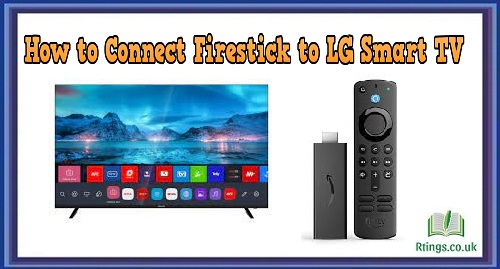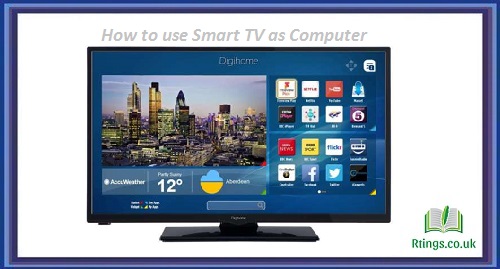Smart TVs have become increasingly popular over the years, and for a good reason. They offer an all-in-one entertainment solution, allowing you to access streaming services, cable or satellite TV, games, and apps from one device. However, with so many features and functions, navigating a Smart TV interface can be overwhelming, especially if you need to become more familiar with the technology. In this guide, we’ll walk you through the steps to easily navigate a Smart TV interface.
Step 1
Understanding the Remote Control The remote control is the primary tool for navigating a Smart TV interface. The remote control can vary in design depending on the brand and model of your Smart TV. However, most remote controls have a few common buttons that perform similar functions. These include:
Power Button
Used to turn the TV on or off. Home Button: Takes you to the main menu. Back/Return Button: Takes you back to the previous screen or menu Navigation/Directional Pad: Used to navigate menus and select options OK/Select Button: Used to select an option or confirm a choice Volume/Channel Buttons: Used to adjust the volume or change channels Options/Settings Button: Takes you to the TV’s settings menu Voice Control Button: Allows you to use voice commands to navigate the TV
Step 2
Connecting to the Internet Before you can start navigating a Smart TV interface, you need to connect your TV to the Internet. This can be done in several ways:
Wi-Fi
Most Smart TVs have built-in Wi-Fi, allowing you to connect to your home Wi-Fi network. Ethernet: You can connect your Smart TV to your router using an Ethernet cable. Mobile Hotspot: If you don’t have access to Wi-Fi or Ethernet, you can use your mobile phone as a hotspot to connect your Smart TV to the Internet.
Once you’ve connected your Smart TV to the Internet, you can start navigating the interface.
Step 3
Navigating the Home Screen The home screen is the main menu of a Smart TV interface. It’s where you’ll find all your apps, channels, and settings. Press the Home button on your remote control to access the home screen.
Once on the home screen, you’ll see a series of icons, usually arranged in rows or columns. These icons represent different apps, channels, and features. To navigate the home screen, use the directional pad on your remote control to move the cursor up, down, left, or right.
To select an icon, move the cursor to the icon you want to select and press the OK button on your remote control. This will take you to the app or channel you selected.
Step 4
Accessing Apps Apps are the heart of a Smart TV interface. They allow you to access a variety of streaming services, games, and other features. To access the apps on your Smart TV, navigate to the app icon on the home screen and press the OK button.
Once you’re in the app menu, you’ll see a list of available apps. You can use the directional pad on your remote control to navigate through the list of apps. To select an app, move the cursor to the app you want to select and press the OK button.
Step 5
Watching TV and Streaming Content Smart TVs give you access to a variety of streaming services, such as Netflix, Hulu, and Amazon Prime Video. To access these services, navigate to the app icon on the home screen and select the streaming service you want to use.
Once you’ve selected a streaming service, you can browse the available content using the directional pad on your remote control. To select a movie or TV show, move the cursor to the content you want to watch and press the OK button.
You can access live TV through your Smart TV if you have cable or satellite TV. To do this, navigate to the TV icon on the home screen and select the cable or satellite TV option. You’ll be prompted to enter your login credentials to access your TV provider’s content.
Step 6
Adjusting Settings Smart TVs come with a variety of settings that allow you to customize your viewing experience. To access the settings menu, navigate to the settings icon on the home screen and press the OK button.
In the settings menu, you can adjust a variety of settings, such as picture and sound settings, network settings, and app settings. Use the directional pad on your remote control to navigate the settings menu, and press the OK button to select a setting.
Step 7
Using Voice Control Many Smart TVs come with voice control features that allow you to navigate the interface using voice commands. To use voice control, press the voice control button on your remote control and speak your command. For example, you can say “Open Netflix” to open the Netflix app or “Turn off the TV” to turn off the TV.
Step 8
Updating the Software Smart TVs often receive software updates that add new features and improve performance. To check for updates, navigate to the settings menu and select the software update option. If an update is available, follow the on-screen instructions to download and install the update.
Conclusion
Navigating a Smart TV interface can initially seem overwhelming, but it can become second nature with some practice. By understanding your remote control, connecting to the internet, and navigating the home screen, you can access a variety of apps, channels, and features on your Smart TV. With these tips, you can make the most of your Smart TV and enjoy all its entertainment options.
Frequently Asked Questions (FAQs)
Can I use my smartphone as a remote control for my Smart TV?
Yes, many Smart TVs have companion apps that allow you to use your smartphone as a remote control. These apps typically offer additional features, such as voice search and keyboard input, that make navigating the Smart TV interface even easier.
What if I can’t find the app I want on my Smart TV?
If you are still looking for the app you want on your Smart TV, the app may be unavailable for your TV’s platform. However, you can often use a streaming device like a Roku or Apple TV to access additional apps and content.
Can I use my Smart TV without an internet connection?
Yes, you can still use your Smart TV to watch cable or satellite TV without an internet connection. However, many of the features and apps on a Smart TV require an internet connection to function, so you will need an internet connection to access streaming services or other online content.







